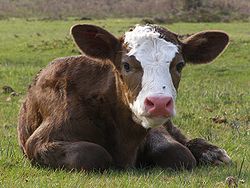Can beef production help restore ecosystems?
A team of scientists, advisors and communications specialists are banding together to explore whether ranching management can create robust soils, watersheds and wildlife habitat while sequestering atmospheric carbon dioxide.
The Arizona State University-SoilCarbon Nation team is examining the adaptive multi-paddock (AMP) grazing management technique that involves using small-sized fields to provide short periods of grazing for livestock and long recovery periods for fields. The method mimics the migrations of wild herd animals, such as elk, bison and deer. The science team proposes a whole system science measurement approach in comparing AMP grazing with conventional, continuous grazing methods.
Peter Byck, professor of practice at the School of Sustainability and the Walter Cronkite School of Journalism and Mass Communication at ASU, is helping organize the project.
“By using measures – such as the carbon stored, the water absorbed and retained, populations of fungi, bacteria, wild life and insects, and rancher and animal well-being – we are comparing adaptive grazing with conventional grazing to see if the former actually improves ranch ecosystems,” he said. “We hope to study and compare 36 ranches located in four diverse eco-regions across the U.S. and southern Canada.”
While individual members of the team concentrate on aspects and impacts of various grazing techniques, Byck’s focus is to discover whether the methods store carbon in the soil, and if so, which is the most successful.
According to Byck, the idea for the project came from researching Soil Carbon Cowboys, a short Carbon Nation 2.0 film made in collaboration with ASU. His feature documentary, 2011’s Carbon Nation, focuses on climate change solutions.
“While filming Soil Carbon Cowboys, we came across ranchers who were adopting healthier grazing practices to rejuvenate their land and their livestock,” said Byck. “What they did not know is that they were helping capture a significant amount of carbon dioxide from the air.”
The anecdotal evidence led to curiosity regarding the effectiveness of adaptive grazing. Byck and a team of leading soil, livestock, biodiversity and communications specialists have decided to investigate the following question: What is the best rangeland management technique for significantly sequestering carbon in rangeland soils and improving rangeland socio-ecological systems?
Previous research led by Richard Teague at Texas A&M University shows that ranches practicing AMP grazing sequestered an additional 30 tons of carbon per hectare over 10 years compared to conventionally grazed ranches. Although sparse, the prior pool of studies on the topic provides a solid framework upon which Byck and team hope to build.
Byck, who calls himself the convener and storyteller for the project, said that the communications component of the project is just as important as the science. He’d be filming the entire execution of the project on the ground level.
“Through the communications pieces, we’d like to be able to show everyone how the challenge is being tackled at the grassroots level by people who are just like them.”
He added:
“Current methods used to capture and store carbon are industrial in nature and expensive. Adaptive grazing is a natural technology. Ranchers who use the technique are earning more, becoming financially healthy.”


